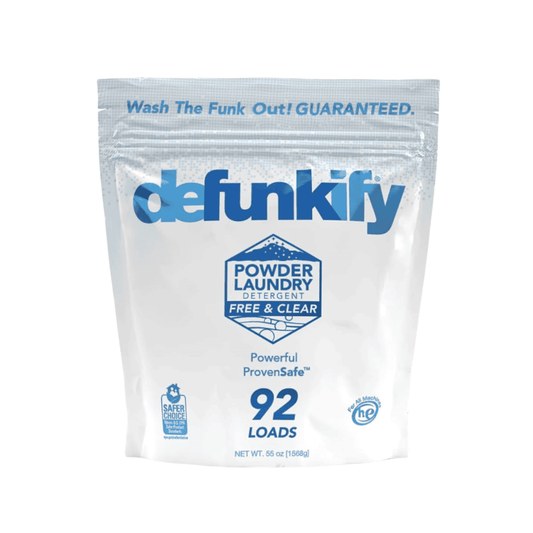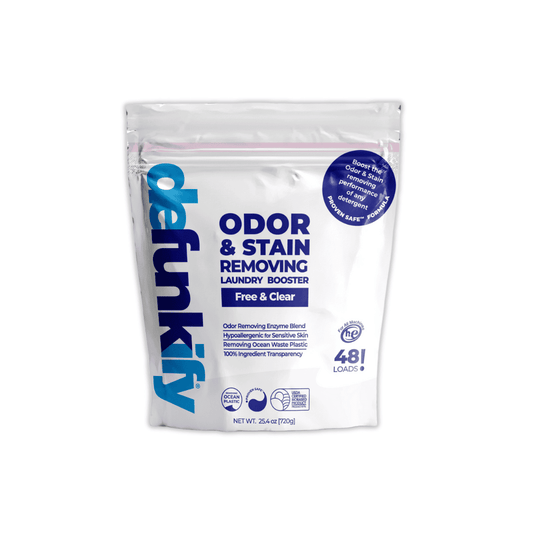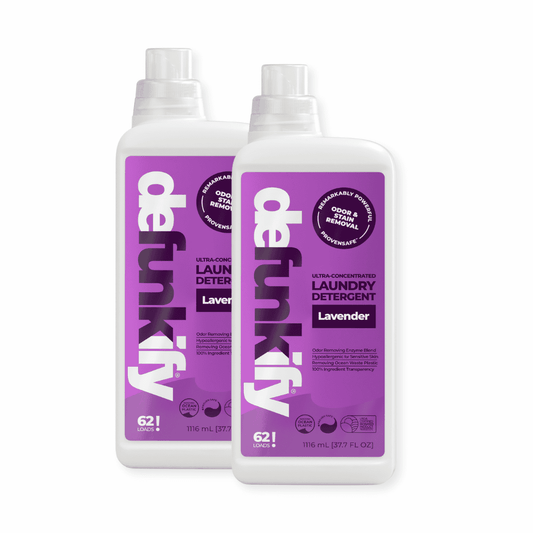
Exposing the dirty business of cover-up scents
Share

Would you bring something that damages the health of not only you and your family but also, the planet, into your home?
I would imagine that most people would answer, without hesitation, a very strong ‘NO WAY!’ to this question. However, are you perhaps doing it unknowingly?
The sad truth is that a large number of cleaning products and laundry detergents are produced with hazardous ingredients. The gallons of toxic laundry detergents that we bring into our homes each year to keep our clothes clean can cause cancer, eye irritation, kidney, liver and respiratory problems, to name a few. 53% of cleaning products that have been assessed by the Environmental Working Group (EWG) contain ingredients known to harm your lungs and in 2008, the University of Washington released a study that found that top-selling laundry products emitted dozens of different chemicals that are damaging to human health. Since 2008 even more chemicals have surfaced in common supermarket detergents. You might be wondering how this could be possible? Or how you had never heard about this before?
And the answer is that this is exactly what manufacturers are banking on. Currently, cleaning product companies are not required by legislation to include ingredients on their product labels. Meaning that consumers are often left in the dark about what’s really inside of the products they are using, breathing and putting on their skin every single day.
I strongly believe that consumers need to be educated about the toxic chemicals in laundry detergents, to allow them to make informed decisions to protect themselves, their families and the environment.
I learnt this lesson the hard way. When I was in my early 30s I started to get awful headaches and dizziness. It turns out that I had been poisoned due to continued contact with resin and solvents, which made me highly sensitized to the chemicals that are in household cleaning products. In a strange way, I am grateful that this happened, as it led me to where I am now, living with a mission to reduce harmful toxic chemicals in everyday products and raise awareness of why this is vital for the health of individuals and the planet. Enter the start of Defunkify.

There are a number of ingredients within laundry detergents that are toxic and damaging to our health (thorough list outlined below). And then there are the dangerous chemicals within seemingly innocent ingredients listed as only “fragrance”. According to the Guardian, 4,000 chemicals are currently used to scent products and a single scent may contain anywhere from 50 to 300 distinct chemicals. Most fragrances have been classified as allergens, hormone disruptors, and neurotoxins. They commonly contain phthalates, which have been linked to cancer, reproductive harm, and respiratory toxicity. And yet most people still search for that ‘clean laundry smell’.
We live in a scented world, we have learnt over a number of years that clean laundry should smell of clean breeze or tropical burst. What manufacturers don't want you to know is that smelling good can come at a cost to your health and the cleanliness of your clothes. Clean should smell of nothing but fresh air. If the fragrance listed on your laundry detergent does not explicitly state it is plant-based, then it is a synthetic by-product of the petroleum industry and will more likely be covering up odors instead of cleaning deeply. The majority of household laundry detergents depend on synthetic fragrances to ‘cover up’ the odors their formulas can not properly remove. This will leave behind further toxic chemicals on your clothing. Your clothes should not smell after cleaning them - not of dirt and certainly not of synthetic scents. If they do - it’s covering up a bad job of cleaning.
And the problem does not end there. Anything we use to clean ourselves and our clothes ultimately ends up in our waterways, ingested or inhaled. So toxic cleaning products are not just an issue for our health and the health of our families, they are also harmful to the environment and contaminate waterways. The chemicals drain into our lakes, rivers and oceans and cause all sorts of problems, including dangerous levels of aquatic toxicity.
David Walla, the senior scientist at Defunkify saw firsthand while growing up the effects that toxic chemicals have on our health and water systems, with an Ohio-wide recommendation to reduce fish consumption as the rivers had been so badly polluted. Why do we have to live like this?

There has been a lot of media attention surrounding plastic pollution from laundry, which is absolutely valid and important. We have seen partnerships like the one between Patagonia and Samsung to keep microplastics from our laundry out of the ocean. However, there is very little focus on the detrimental pollution caused by the toxic formulas inside those plastic bottles that are going down the drain and into the environment, or on the toxic formulas that leave behind poisonous and harmful gunk in our clothes, which can pass from the skin and into the bloodstream. This is a huge issue and one I am on a mission to change.
What am I asking for? I want the industry to have tighter regulations on what ingredients can be used in laundry detergents and all cleaning products. I strongly believe there also needs to be a requirement for all companies to list the ingredients in an easy-to-understand format on their labels.
This is an issue that is detrimental to the health of people and the planet. People deserve to be informed about what they are bringing into their homes. I am calling on all consumers to check the back of their laundry detergents and all cleaning products and if they are not happy, research alternatives.
Only when consumers are informed can they collectively make a decision to change and bring the industry with them.
List of key ingredients to avoid:
- fragrance - manufacturers combine a number of chemicals to produce a fragrance—so you’ll believe your clothes are clean because they smell clean.
- sodium lauryl sulfate (SLS)
- sodium laureth sulfate (SLES)
- 1,4-dioxane
- NPE (nonylphenol ethoxylate)
- phosphates
- quaternium-15
- diethanolamine nonylphenol ethoxylate or NPE
- linear alkyl benzene sulfonates or LAS
- petroleum distillates
- polyalkylene oxide
- ethylene oxide
- naphthotriazolystilbenes
- benzoxazolyl
- diaminostilbene disulfonate
- formaldehyde/formaldehyde releasers
- quaternium-15 / quaternary ammonium compounds
- NTA (Nitrilotriacetic acid)
- borates
- chlorine bleach
- phthalates
- sodium hypochlorite
- ammonium hydroxide
- borax and boric acid
Together, let's get the funk out of this industry,
Richard
Click here for the official press release.





5 comments
Love this super clean non chemical laundry detergent!!! Let’s have more promos please!!!
I ran across your Defunkify peppermint spray on clearance sale in a grocery store here in Oregon one time. And boy am I glad I did! I love your products. I love the fact that they’re from Eugene and U of O former students! I love what an excellent awesome job you do and everything that you are doing to help change the toxicity of our environment right now, you’re amazing!! I tell everybody about your products! You have a loyal customer for life! Thank you so much! I am grateful to you beyond belief!! Mary N. (Oh, and Go Ducks!)
My family LOVES your products! Our clothes and towels have never smelled cleaner, fresher and no longer stink when they get wet. Keep up the great work. We have shared your products with many other people now!!
I have a question. I’ve been using your product for a while now and I love it. My problem isn’t your detergent it’s my washer machine (left by previous home owner). It has a few parts that need replacing from what looks like mold but in the meantime I’ve been using arm & hammer baking soda in my laundry sometimes to avoid the mold smell on the clothes and help clean the machine too. Is it doing any damage to use that with your detergent? Am I just reversing the goal of cleaner detergent for cleaner laundry?
Thank you for sharing your knowledge and providing a great product.